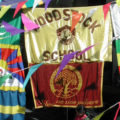I’ve been hoping for years to see this full show, but the right confluence of circumstances will have to occur. At least I have now seen some excerpts, thanks to Tom’s presence at the WOSA annual reunion I just attended in Baltimore.
Category Archives: Woodstock School
Yes, All Girls
I’m trying to remember how young I was when I first realized that, as a girl, I was more likely to be a target than boys were.
It might have been when I joined an inner-city Pittsburgh school for 5th grade. I had problems fitting in there. I was already a weird, traumatized kid, just returned to the US due to my parents’ divorce after being raised in Thailand. It’s not surprising that I was teased a lot in school. Many kids were (and still are, only now it’s called bullying.) But there’s always specific content to teasing. Let’s examine the taunts that were leveled at me.
One of the things I was teased about was my butt, which stuck out, or at least people told me it did (perhaps I was a bit sway-backed). A pop song that had been popular before I returned to the US in 1971 had a line about “Bertha Butt, one of the Butt sisters”. I had never heard the song, and was baffled (and hurt) when one of the boys in my class sang that line at me. Over and over again.
Continue reading Yes, All GirlsTalking about Woodstock School on the Kamla Show
This interview took place a few months later, and was shown on a local channel this week, you can also watch it above. It was fun and, of course, I’m always happy to have an opportunity to talk about Woodstock!
I also enjoyed chatting with the evening’s other guest, Asha Sharma, author of American in Khadi: The Definitive Biography of Satyanand Stokes. Stokes was her grandfather, a fascinating character. The only American to be arrested for participating in the struggle for India’s independence, he also introduced apples to Himachal Pradesh, where they are now a major cash crop.
Rocky and Mayur visit Woodstock School in Mussoorie
This foodie travel show from India’s NDTV does a good job of showcasing many aspects of the school – besides the food, which in my day was NOT anything to write home about (except to complain). The full 18-minute show can be seen on the NDTV site.
Woodstock School in 1979
In my digital vaults, found a digitized version of a promotional film shot at Woodstock School in 1979 by John Riber (an alumnus of Woodstock’s sister school in south India, Kodaikanal), narrated by Peter Lugg and students. Many students and staff of my generation are shown!








